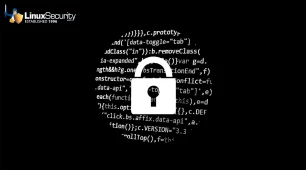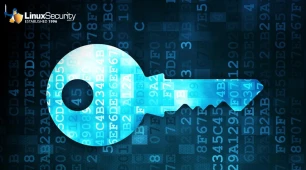SuSE: 2005-067: kernel various security and bugfixes Security Update
Summary
-----BEGIN PGP SIGNED MESSAGE-----
Hash: SHA1
______________________________________________________________________________
SUSE Security Announcement
Package: kernel
Announcement ID: SUSE-SA:2005:067
Date: Tue, 06 Dec 2005 13:00:00 +0000
Affected Products: SUSE LINUX 10.0
Vulnerability Type: denial of service
Severity (1-10): 6
SUSE Default Package: yes
Cross-References: CVE-2005-2973, CVE-2005-3044, CVE-2005-3055
CVE-2005-3180, CVE-2005-3181, CVE-2005-3271
CVE-2005-3527, CVE-2005-3783, CVE-2005-3784
CVE-2005-3805, CVE-2005-3806, CVE-2005-3807
Content of This Advisory:
1) Security Vulnerability Resolved:
Various security fixes, bugfixes and a XEN update
Problem Description
2) Solution or Work-Around
3) Special Instructions and Notes
4) Package Location and Checksums
5) Pending Vulnerabilities, Solutions, and Work-Arounds:
See SUSE Security Summary Report.
6) Authenticity Verification and Additional Information
______________________________________________________________________________
1) Problem Description and Brief Discussion
This kernel update for SUSE Linux 10.0 contains fixes for XEN, various
security fixes and bug fixes.
CVE-200n-nnnn numbers refer to Mitre CVE IDs (http://cve.mitre.org/).
This update includes a more recent snapshot of the upcoming XEN 3.0.
Many bugs have been fixed. Stability for x86_64 has been improved.
Stability has been improved for SMP, and now both i586 and x86_64
kernels are built with SMP support.
This update contains the following security fixes:
- CVE-2005-3783: A check in ptrace(2) handling that finds out if
a process is attaching to itself was incorrect and could be used
by a local attacker to crash the machine.
- CVE-2005-3784: A check in reaping of terminating child processes did
not consider ptrace(2) attached processes and would leave a ptrace
reference dangling. This could lead to a local user being able to
crash the machine.
- CVE-2005-3271: A task leak problem when releasing POSIX timers was
fixed. This could lead to local users causing a local denial of
service by exhausting system memory.
- CVE-2005-3805: A locking problem in POSIX timer handling could
be used by a local attacker on a SMP system to deadlock the machine.
- CVE-2005-3181: A problem in the Linux auditing code could lead
to a memory leak which finally could exhaust system memory of
a machine.
- CVE-2005-2973: An infinite loop in the IPv6 UDP loopback handling
can be easily triggered by a local user and lead to a denial
of service.
- CVE-2005-3806: A bug in IPv6 flow label handling code could be used
by a local attacker to free non-allocated memory and in turn corrupt
kernel memory and likely crash the machine.
- CVE-2005-3807: A memory kernel leak in VFS lease handling can
exhaust the machine memory and so cause a local denial of
service. This is seen in regular Samba use and could also be
triggered by local attackers.
- CVE-2005-3055: Unplugging an user space controlled USB device with
an URB pending in user space could crash the kernel. This can be
easily triggered by local attacker.
- CVE-2005-3180: Fixed incorrect padding in Orinoco wireless driver,
which could expose kernel data to the air.
- CVE-2005-3044: Missing sockfd_put() calls in routing_ioctl() leaked
file handles which in turn could exhaust system memory.
- CVE-2005-3527: A race condition in do_coredump in signal.c allows
local users to cause a denial of service (machine hang) by triggering
a core dump in one thread while another thread has a pending SIGSTOP.
Additionally the following non security bugs were fixed:
- Fix NFS cache consistency races which could lead to data corruption and
crashes.
- A kernel panic when loading the r8169 module without powermanagment
was fixed.
- i386: A race condition in the power management module powernow-k8
was fixed.
- Special ELF binaries without DATA and BSS segments could not be loaded
due to too strict kernel checks.
- Various bugs in the ALSA sound system were fixed.
- A problem in IPv6 initialization with IPv6 disabled by policy that could
leave dangling kernel pointers around was fixed.
- Added sis 965l support to the sis5513 ide driver.
- Disabled C2/C3 power management states on all IBM R40e BIOSes.
- Fixed machine crash when switching the io-scheduler away from CFQ.
- Call reboot notifiers of power off to switch off certain machines.
- AMD64: Don't use TSC for time keeping on AMD single socket dual core
systems.
- Fixed the "treason uncloaked" kernel messages that were caused by
a stale pred_flags variable when the TCP snd_wnd changes.
- USB floppy drive SAMSUNG SFD-321U/EP was detected 8 times.
- CONFIG_ACPI_HOTKEY is not supportable yet according to Intel, so we
disabled it.
- Disable ACPI on machines from before 2001 on all kernels again.
- USB: always export interface information for modalias.
- Various iSCSI fixes.
- Avoid a potential fs corruption on SMP systems.
- i386: Increased number of CONFIG_SERIAL_8250_NR_UARTS to 8.
- Fixed a data corruption in the MD device driver when the delayed
recovery is interrupted.
- ahci: Don't set SActive for non-NCQ commands. This could have left
the LED burning even for inactivity.
- ppc: Handle GCC 4 generated relocations for 32bit memory access
in the module loader.
- ppc: Removed a special case for ppc to use MAC from prom if CSR is
corrupt
- CIFS: Made cifsd (kernel daemon for the CIFS filesystem) suspend
aware.
- Fixed ACPI issues on an ASUS L5D.
- IDE: Worked around power management problems.
- Disable AMD TLB flush filter on i386/x86-64 (might help 3d drivers)
- Quiet down capacity reading from IDE CD when no media inserted.
- ACPI: Worked around undefined ZOO* objects on certain Acer Aspire
notebooks.
- ACPI: Fixed Oops on pcc_acpi unloading.
- ACPI: Fix hang in ACPI device scan on certain HP nx Laptops.
- Fixed a bug in ACL handling of tmpfs.
- Fix time going twice as fast problem on ATI Xpress chip sets.
2) Solution or Work-Around
None, please install the fixed packages.
3) Special Instructions and Notes
SPECIAL INSTALLATION INSTRUCTIONS
================================ The following paragraphs guide you through the installation
process in a step-by-step fashion. The character sequence "****"
marks the beginning of a new paragraph. In some cases, the steps
outlined in a particular paragraph may or may not be applicable
to your situation. Therefore, make sure that you read through
all of the steps below before attempting any of these
procedures. All of the commands that need to be executed must be
run as the superuser 'root'. Each step relies on the steps
before it to complete successfully.
**** Step 1: Determine the needed kernel type.
Use the following command to determine which kind of kernel is
installed on your system:
rpm -qf --qf '%{name}\n' /boot/vmlinuz
**** Step 2: Download the packages for your system.
Download the kernel RPM package for your distribution with the
name indicated by Step 1. Starting from SUSE LINUX 9.2, kernel
modules that are not free were moved to a separate package with
the suffix '-nongpl' in its name. Download that package as well
if you rely on hardware that requires non-free drivers, such as
some ISDN adapters. The list of all kernel RPM packages is
appended below.
The kernel-source package does not contain a binary kernel in
bootable form. Instead, it contains the sources that correspond
with the binary kernel RPM packages. This package is required to
build third party add-on modules.
**** Step 3: Verify authenticity of the packages.
Verify the authenticity of the kernel RPM package using the
methods as listed in Section 6 of this SUSE Security
Announcement.
**** Step 4: Installing your kernel rpm package.
Install the rpm package that you have downloaded in Step 2 with
the command
rpm -Uhv
References





















